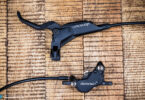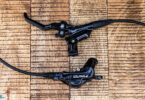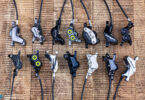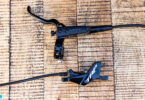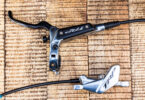The Rocky Mountain Altitude Carbon 90 is a real dream bike! It is beautifully finished, a lot of fun to ride, and has a great component spec. There is one unfortunate problem with the bike, however: it’s slow! Why is that?
For an overview of the test fleet head to the main article: Let’s go Racing! – The 10 fastest enduro bikes in test
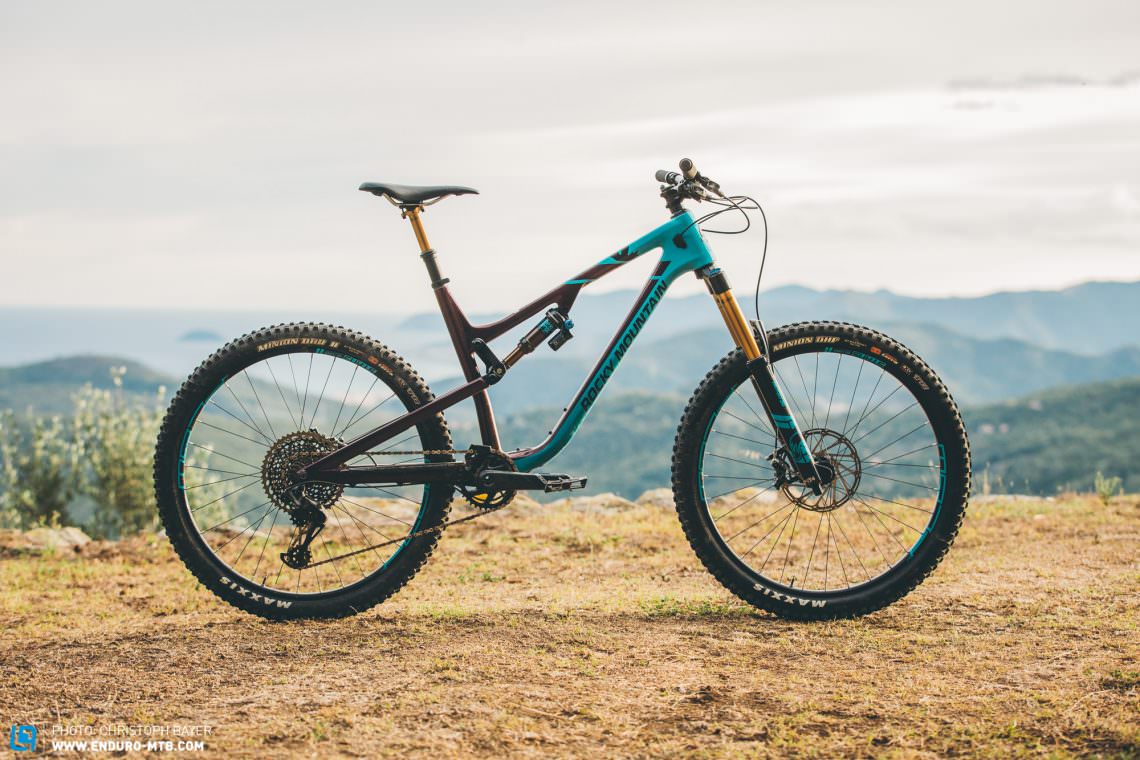
The Altitude has a long-standing tradition at Rocky Mountain. At the start of the year, the Canadians presented us with a completely revised version. The new Altitude still features the well-known RIDE-9 system, which allows both the geometry and the kinematics of the rear linkage to be adapted. Of course, for our test we opted for the slackest setting – it was all downhill, after all! In addition to the RIDE-9 system, the hidden bearings, which underline the clean, high-quality look of the bike, are a standout feature. The specially developed chain guide is also a nice addition, although it did drop the chain once in our tests. Typical for Rocky Mountain, the Altitude features a Race Face cockpit with a 780 mm-wide Next R handlebar. The rest of the components are spot on too, which you would expect at a price tag of € 7,900.
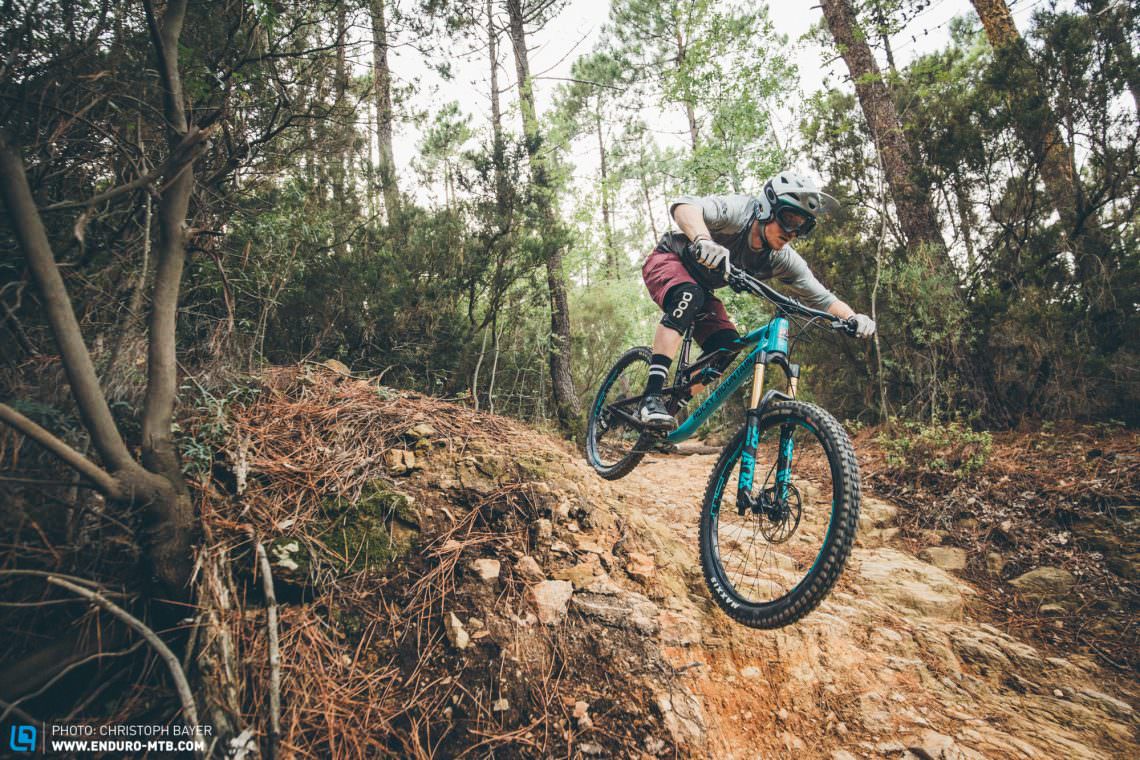
At 12.6 kg, the Rocky Mountain Altitude Carbon 90 is one of the lighter bikes in this comparison, and you can feel it right away. The bike gets up to speed quickly and efficiently converts the rider’s pedal strokes into propulsion. Uphill, therefore, is no problem with the Altitude. On the descents, however, the problems begin to crop up! The Altitude requires an engaged and honed riding style, especially on very fast and rough sections.
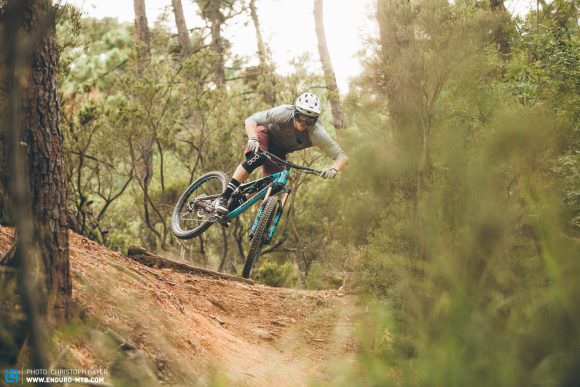
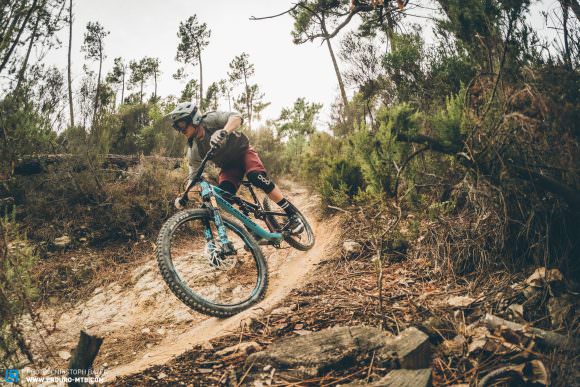
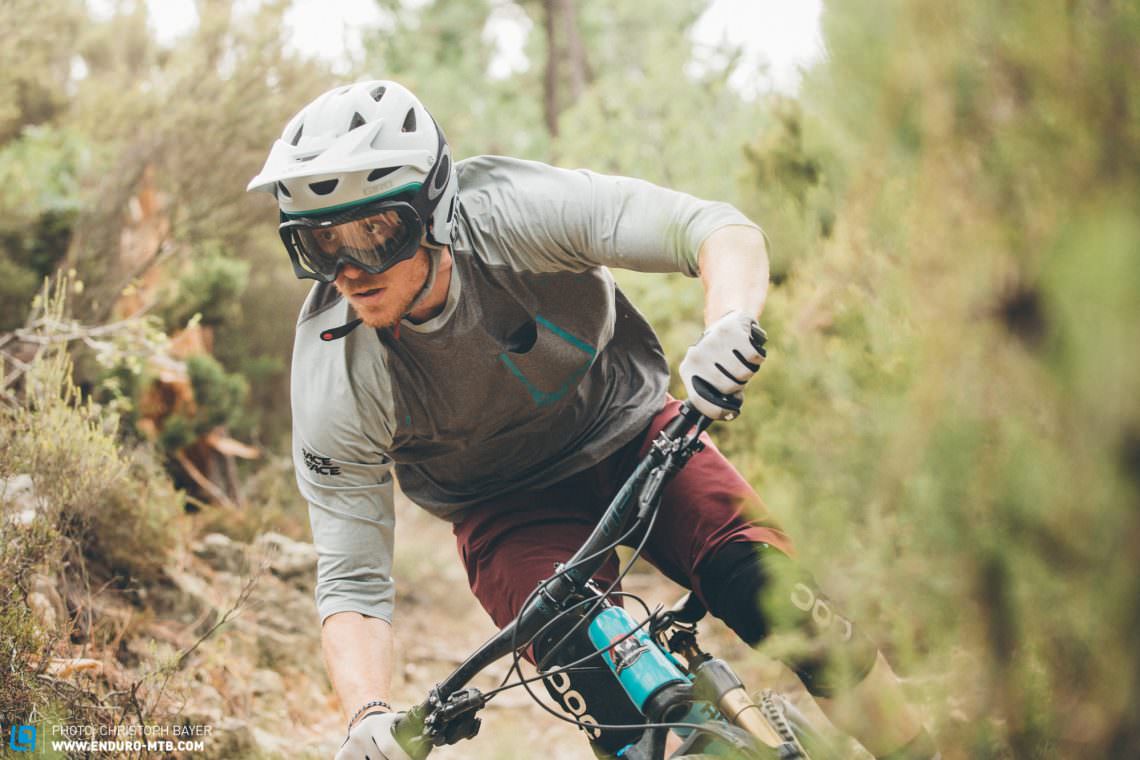
Like a rabbit on cocaine, the bike shoots from left to right and requires conscious effort to be kept on course. It’s not unstable, though – just very direct. The short chainstays give the Altitude huge amounts of agility, so anyone looking to have fun will love this bike! Approaching drops, the front lifts up with ease, and manuals are child’s play. The fork and the rear suspension work very well together and give a lot of feedback. However, the bike is not as composed on the trail as the others in this comparison, which ultimately costs a lot of time.
The Rocky Mountain Altitude Carbon 90 in Detail
Fork Fox 36 Float Factory 160 mm € 7,900 The Rocky Mountain Altitude is a great bike – but, unfortunately, not for racing. Its super-agile handling and the defined suspension feel is loads of fun, but it will cost you valuable seconds at high speeds. If you want to be fast on this bike, you will have to put in a few more hours at the gym! – super-agile and direct – nervous at speed For more information head to bikes.com For an overview of the test fleet head to the main article: Let’s go Racing! – The 10 fastest enduro bikes in test All bikes in test: Canyon Canyon Strive CF 9.0 Team | Giant Reign Advanced 0 | Lapierre Spicy Team Ultimate | Nukeproof Mega 275 RS | Pole EVOLINK 140 29 | Santa Cruz Hightower LT | SCOTT Genius 900 Tuned 2018 | Specialized S-Works Enduro 29 | YT JEFFSY 27 CF Pro Race Did you enjoy this article? If so, we would be stoked if you decide to support us with a monthly contribution. By becoming a supporter of ENDURO, you will help secure a sustainable future for high-quality mountain bike journalism. Click here to learn more. Words & Photos:
Rear shock Fox Float DPX2 Factory 150 mm
Brakes SRAM Guide RSC
Drivetrain SRAM X01 Eagle
Seat post Fox Transfer Factory
Stem Rocky Mountain 35
Handlebar Race Face Next R
Tires Maxxis Minion DHF WT / Maxxis Minion DHR II WT
Rims Stans Flow MK3
Hubs DT Swiss 350
Price
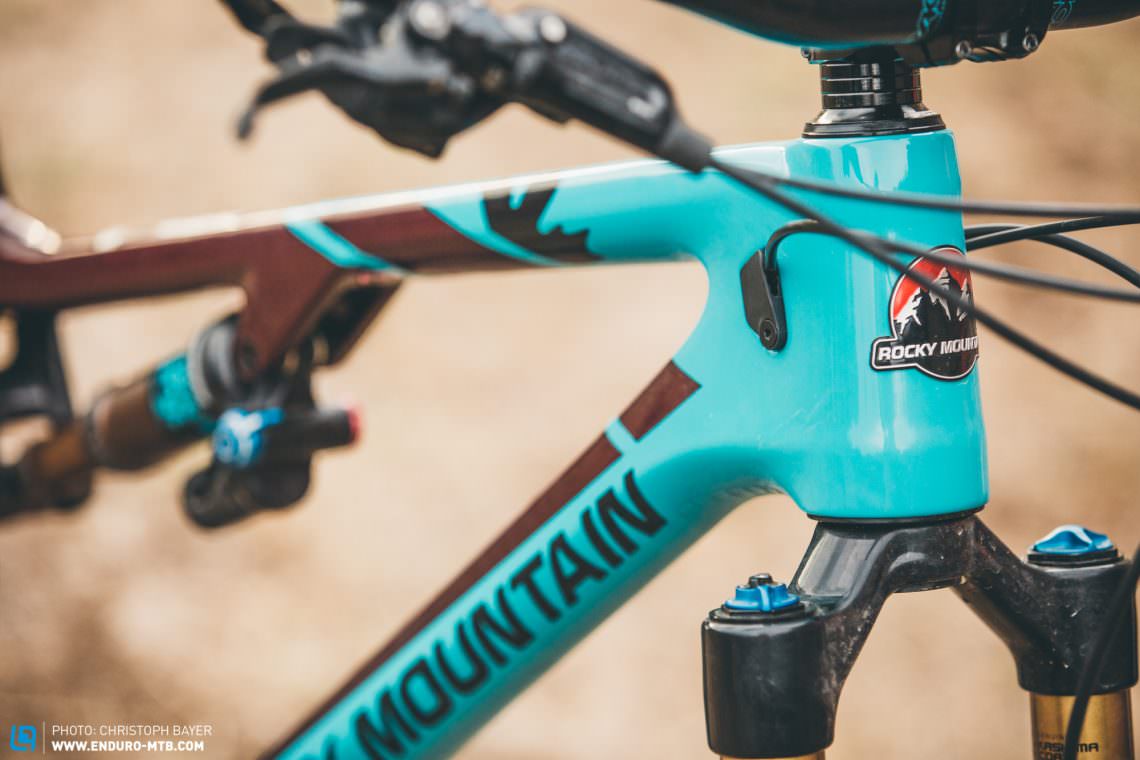
The prize for the nicest carbon frame clearly goes to the Rocky Mountain Altitude!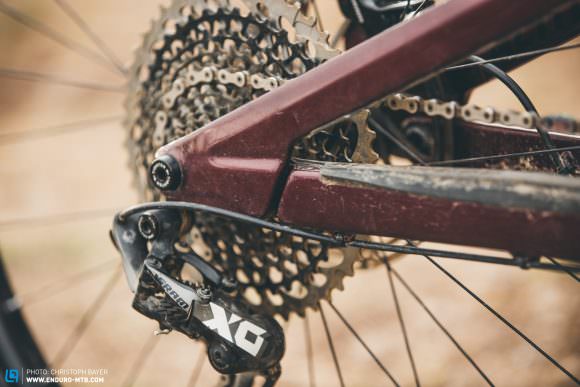
If you like manualing and railing turns, you will love the ultra-short chainstays of the Altitude. If you race against the clock, however, you’ll want more stability (and therefore longer chainstays).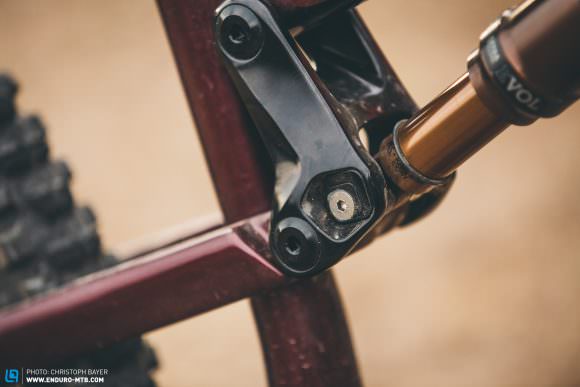
There are nine settings to choose from with the RIDE-9 system. We opted for the slackest setting to give the bike the maximum amount of stability.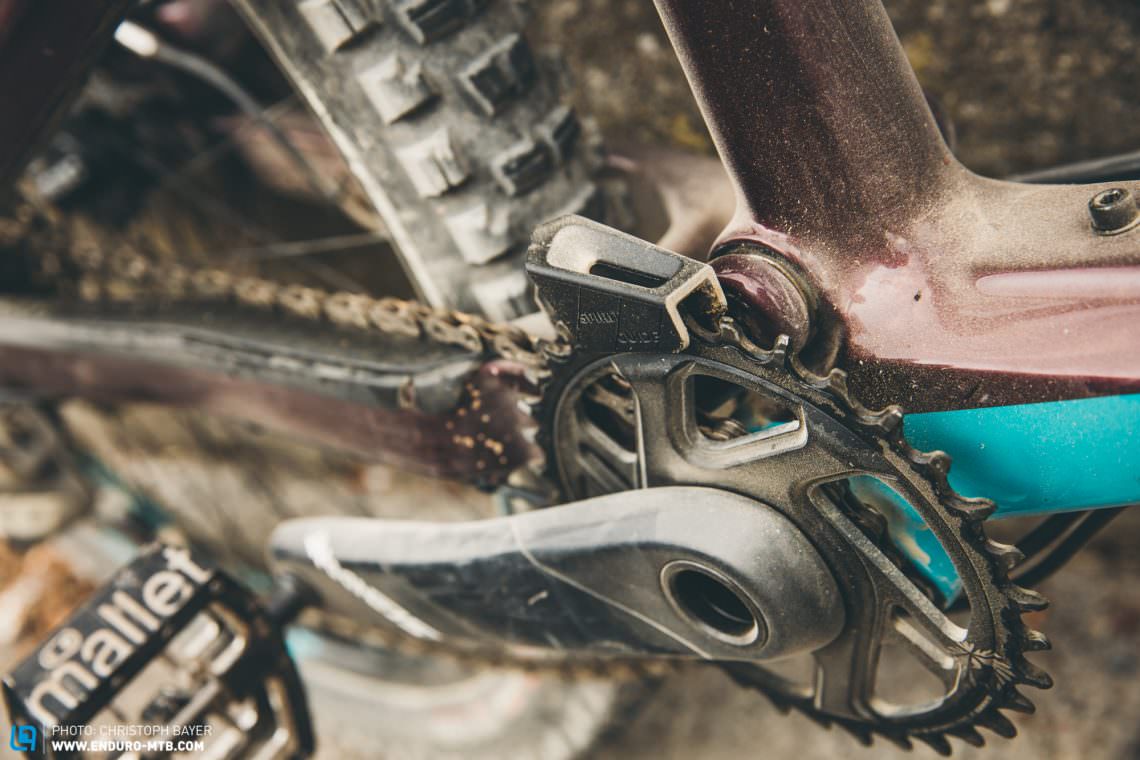
Despite a specially developed chain guide, the Rocky Mountain Altitude dropped its chain. This is probably just an unfortunate coincidence, but it could potentially cost valuable seconds.The geometry of the Rocky Mountain Altitude Carbon 90
Size
XS
S
M
L
XL
Seat tube
368 mm
394 mm
432 mm
470 mm
508
Top tube
548 mm – 545 mmm
578 mm – 575 mm
603 mm – 600 mm
628 mm – 625 mm
658 mm – 655 mm
Steuerrohr
100 mm
110 mm
120 mm
130 mm
145 mm
Head angle
65° – 66.1°
65° – 66.1°
65° – 66.1°
65° – 66.1°
65° – 66.1°
Seat angle
74° – 75.1°
74° – 75.1°
74° – 75.1°
74° – 75.1°
74° – 75.1°
Chainstay
425mm
425 mm
425 mm
425 mm
425 mm
Tretlagerabsenkung
13 mm – (-1) mm
13 mm – (-1) mm
13 mm – (-1) mm
13 mm – (-1) mm
13 mm – (-1) mm
Wheelbase
1122 mm – 1119 mm
1153 mm – 1150 mm
1180 mm – 1177 mm
1206 mm – 1204 mm
1239 mm – 1236 mm
Reach
380 mm – 391 mm
407 mm – 419 mm
430 mm – 441 mm
452 mm – 464 mm
479 mm – 490 mm
Stack
589 mm – 578 mm
595 mm – 587 mm
604 mm – 596 mm
613 mm – 605 mm
628 mm – 619 mm
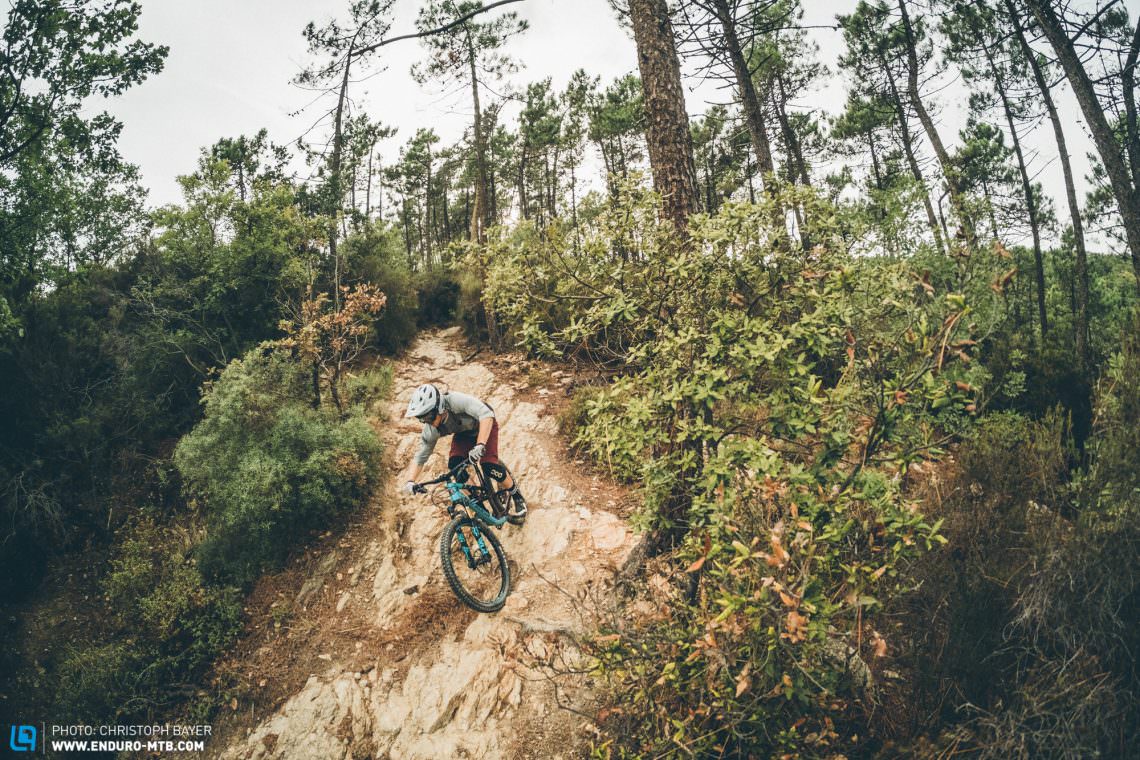
Conclusion
Strengths
– incredibly beautiful frame
– high-quality componentsWeaknesses
– chain dropped despite the chain guide
– too slow to race
The test fleet







